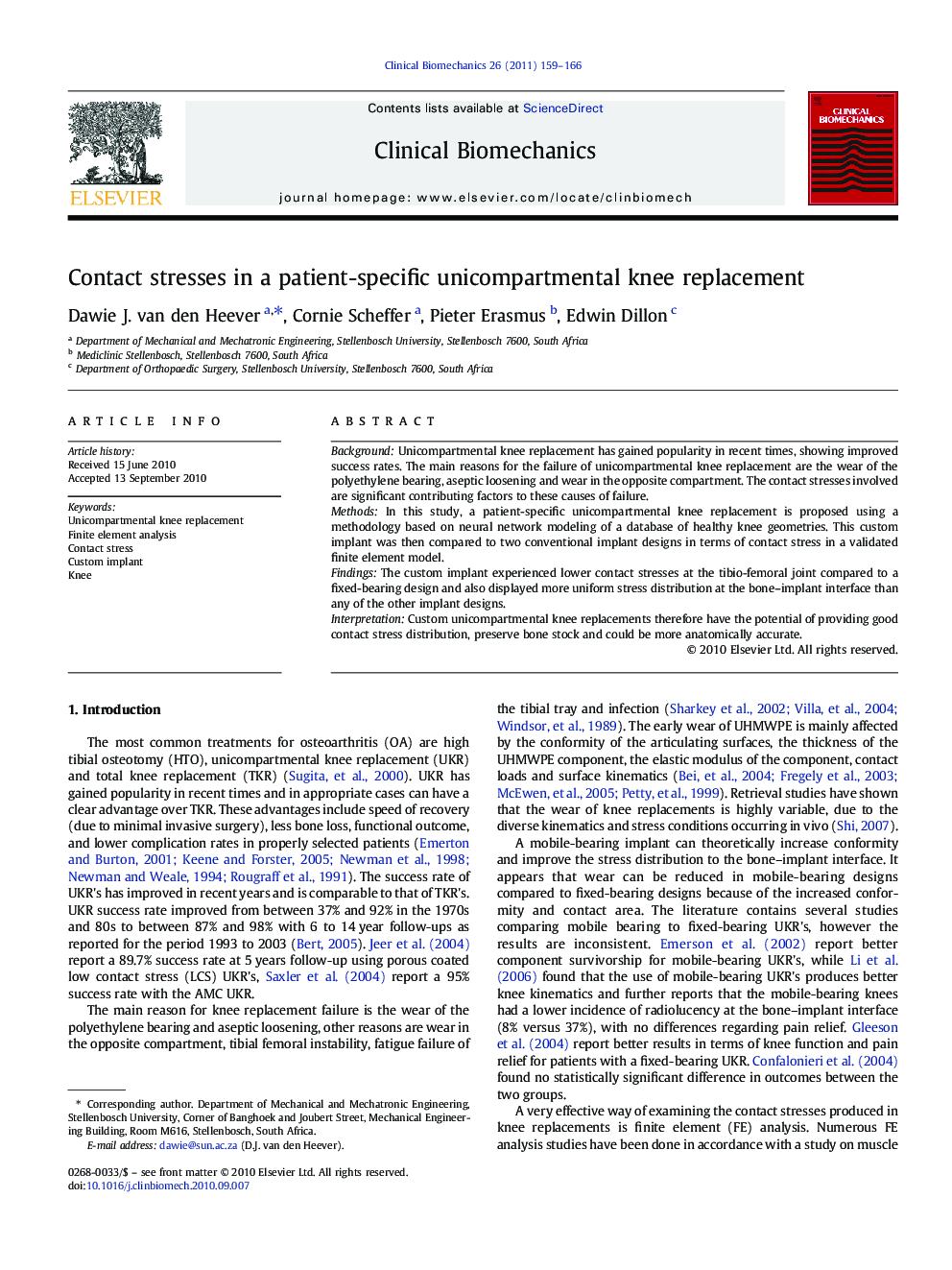| Article ID | Journal | Published Year | Pages | File Type |
|---|---|---|---|---|
| 4050866 | Clinical Biomechanics | 2011 | 8 Pages |
BackgroundUnicompartmental knee replacement has gained popularity in recent times, showing improved success rates. The main reasons for the failure of unicompartmental knee replacement are the wear of the polyethylene bearing, aseptic loosening and wear in the opposite compartment. The contact stresses involved are significant contributing factors to these causes of failure.MethodsIn this study, a patient-specific unicompartmental knee replacement is proposed using a methodology based on neural network modeling of a database of healthy knee geometries. This custom implant was then compared to two conventional implant designs in terms of contact stress in a validated finite element model.FindingsThe custom implant experienced lower contact stresses at the tibio-femoral joint compared to a fixed-bearing design and also displayed more uniform stress distribution at the bone–implant interface than any of the other implant designs.InterpretationCustom unicompartmental knee replacements therefore have the potential of providing good contact stress distribution, preserve bone stock and could be more anatomically accurate.
